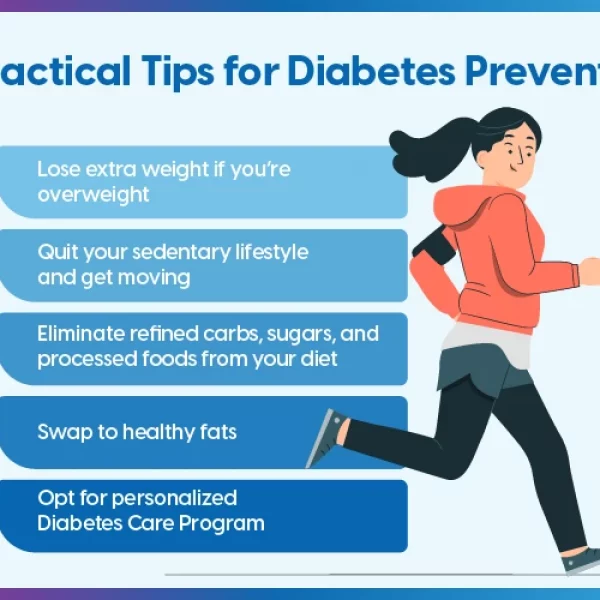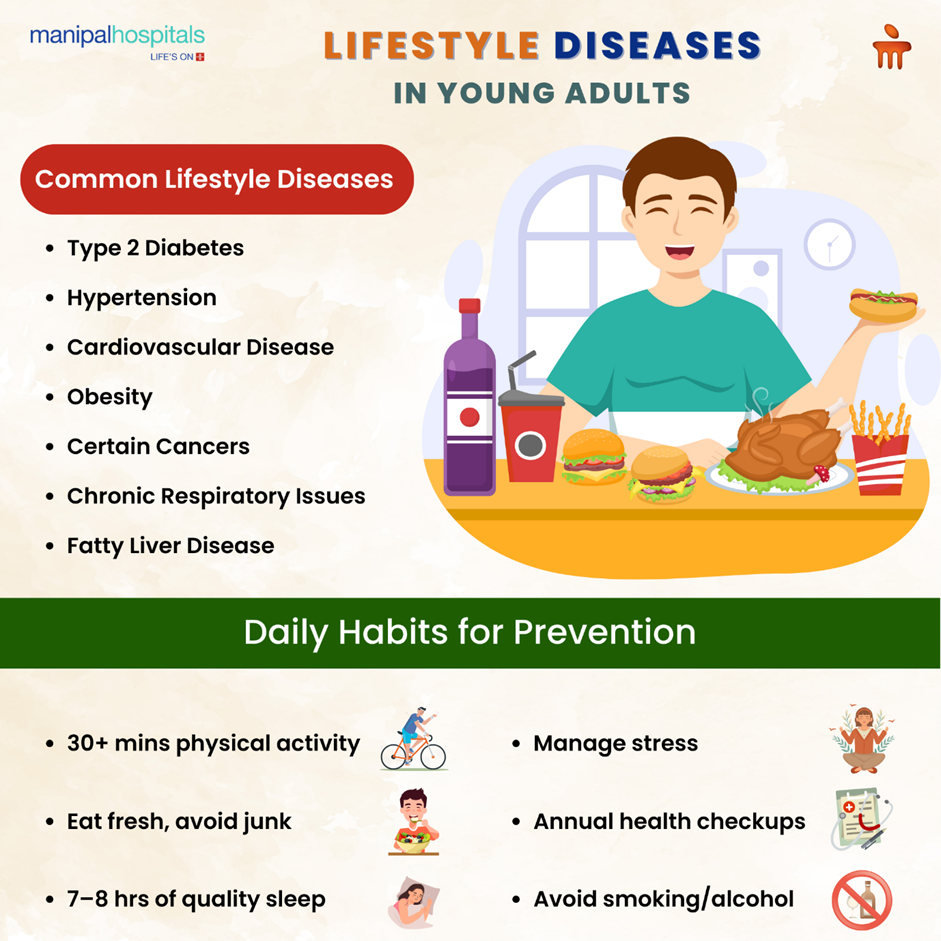Type 2 diabetes is a preventable and, in many cases, reversible condition through targeted lifestyle changes. Research indicates that adopting a healthy diet, engaging in regular physical activity, and achieving modest weight loss can significantly reduce the risk of developing diabetes. Programs like the CDC’s National Diabetes Prevention Program have demonstrated that such interventions can cut the incidence of type 2 diabetes by over half, with even greater benefits for older adults.
Introduction: The Growing Diabetes Epidemic
Type 2 diabetes is a chronic condition that affects millions of people worldwide, with the World Health Organization estimating that nearly 589 million adults globally are living with diabetes, a number expected to rise to 853 million by 2050 The Times of India. In the United States alone, approximately 98 million adults have prediabetes, and more than 8 in 10 of them are unaware of their condition CDC.
The prevalence of type 2 diabetes is increasing due to factors such as poor diet, lack of physical activity, and rising obesity rates. However, the good news is that type 2 diabetes is largely preventable through lifestyle modifications. This article explores how adopting healthier habits can reduce the risk of developing type 2 diabetes, with practical advice and real-life examples to guide you.
Understanding Type 2 Diabetes
Type 2 diabetes occurs when the body becomes resistant to insulin or when the pancreas fails to produce sufficient insulin. Insulin is a hormone that helps regulate blood sugar levels. Without proper insulin function, blood sugar levels can become dangerously high, leading to complications such as heart disease, kidney failure, and nerve damage.
Unlike type 1 diabetes, which is typically diagnosed in childhood and is not preventable, type 2 diabetes is strongly influenced by lifestyle factors and can often be prevented or delayed with appropriate interventions.
Can Lifestyle Changes Prevent Type 2 Diabetes?
Yes, adopting a healthier lifestyle can significantly reduce the risk of developing type 2 diabetes. The Diabetes Prevention Program (DPP), a large-scale study conducted by the National Institutes of Health, found that participants who made modest changes—such as losing 5-7% of their body weight, engaging in 150 minutes of physical activity per week, and eating a low-fat, low-calorie diet—reduced their risk of developing type 2 diabetes by 58% Harvard Health.
For individuals aged 60 and older, the risk reduction was even more significant, at 71% CDC. These findings highlight the power of lifestyle modifications in preventing type 2 diabetes.
Key Lifestyle Changes to Prevent Type 2 Diabetes
1. Achieve and Maintain a Healthy Weight
Excess weight, particularly abdominal fat, is a major risk factor for developing type 2 diabetes. Losing just 5-10% of your body weight can significantly improve insulin sensitivity and reduce blood sugar levels.
Real-Life Example:
Sarah, a 45-year-old woman, was diagnosed with prediabetes. By adopting a healthier diet and increasing her physical activity, she lost 8% of her body weight over six months. As a result, her blood sugar levels returned to normal, and she no longer met the criteria for prediabetes.
2. Engage in Regular Physical Activity
Regular exercise helps the body use insulin more efficiently and can lower blood sugar levels. The American Diabetes Association recommends at least 150 minutes of moderate-intensity aerobic activity per week, such as brisk walking or cycling, along with two or more days of strength training Mayo Clinic.
Real-Life Example:
John, a 60-year-old man with a family history of diabetes, started walking 30 minutes daily and joined a local gym. After a year, he lost 12 pounds, improved his cholesterol levels, and reduced his risk of developing type 2 diabetes.
3. Adopt a Healthy Diet
Eating a balanced diet rich in whole grains, fruits, vegetables, lean proteins, and healthy fats can help regulate blood sugar levels. Limiting the intake of processed foods, sugary beverages, and refined carbohydrates is also crucial.
Real-Life Example:
Emily, a 35-year-old woman, replaced sugary snacks with whole fruits and incorporated more vegetables into her meals. She noticed improved energy levels and a decrease in her blood sugar levels over time.
4. Manage Stress Effectively
Chronic stress can lead to elevated blood sugar levels and increase the risk of developing type 2 diabetes. Practicing stress-reducing techniques such as meditation, deep breathing exercises, and yoga can be beneficial.
Real-Life Example:
David, a 50-year-old man with a demanding job, began practicing mindfulness meditation for 10 minutes each morning. He reported feeling less stressed and noticed better control over his blood sugar levels.
5. Get Enough Sleep
Poor sleep quality and insufficient sleep have been linked to an increased risk of type 2 diabetes. Adults should aim for 7-9 hours of quality sleep per night to support overall health and blood sugar regulation.
Real-Life Example:
Laura, a 40-year-old woman, struggled with sleep disturbances. By establishing a consistent bedtime routine and reducing screen time before bed, she improved her sleep quality and experienced better blood sugar control.
Additional Strategies to Lower Diabetes Risk
- Stay Hydrated: Drinking water instead of sugary drinks can help maintain healthy blood sugar levels.
- Limit Alcohol Consumption: Excessive alcohol intake can lead to weight gain and increased blood sugar levels.
- Quit Smoking: Smoking increases the risk of type 2 diabetes and its complications.
- Monitor Blood Sugar Levels: Regular monitoring can help detect early signs of diabetes and allow for timely intervention.
FAQs
1. Can type 2 diabetes be reversed with lifestyle changes?
Yes, in some cases, significant lifestyle changes can lead to normal blood sugar levels, effectively reversing type 2 diabetes.
2. How quickly can lifestyle changes impact blood sugar levels?
Improvements in blood sugar levels can be seen within weeks to months of adopting healthier habits.
3. Are there any medications to prevent type 2 diabetes?
While lifestyle changes are the primary prevention strategy, medications like metformin may be prescribed for individuals at high risk.
4. Is weight loss necessary to prevent type 2 diabetes?
Even a modest weight loss of 5-10% can significantly reduce the risk of developing type 2 diabetes.
5. Can children develop type 2 diabetes?
Yes, children can develop type 2 diabetes, especially if they are overweight and have a family history of the disease.
6. How can I find a diabetes prevention program?
The CDC offers a National Diabetes Prevention Program that provides resources and support for individuals at risk.
7. Can type 2 diabetes be prevented without medication?
Yes, lifestyle changes alone can prevent or delay the onset of type 2 diabetes.
8. Are there any foods that can help prevent type 2 diabetes?
Foods rich in fiber, such as whole grains, fruits, and vegetables, can help regulate blood sugar levels.
9. How important is physical activity in preventing type 2 diabetes?
Regular physical activity is crucial in preventing type 2 diabetes, as it helps regulate blood sugar levels and improves insulin sensitivity.
10. Can stress affect blood sugar levels?
Yes, chronic stress can lead to elevated blood sugar levels and increase the risk of developing type 2 diabetes.
Conclusion
Preventing type 2 diabetes is achievable through consistent lifestyle changes. By adopting a healthy diet, engaging in regular physical activity, managing stress, and maintaining a healthy weight, individuals can significantly reduce their risk of developing this chronic condition. Programs like the CDC’s National Diabetes Prevention Program offer valuable resources and support to help individuals make these positive changes. Remember, small steps can lead to significant health improvements.




